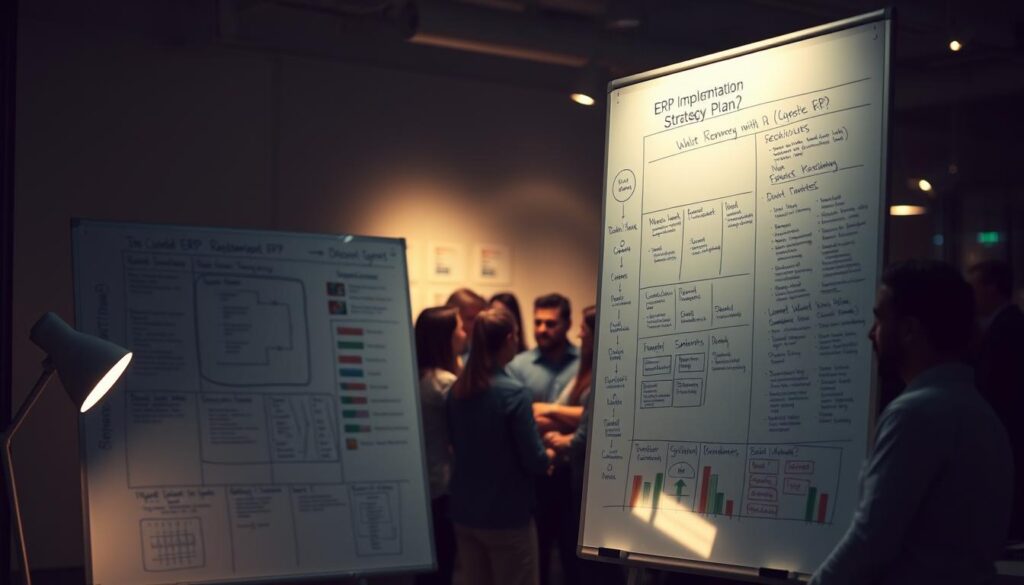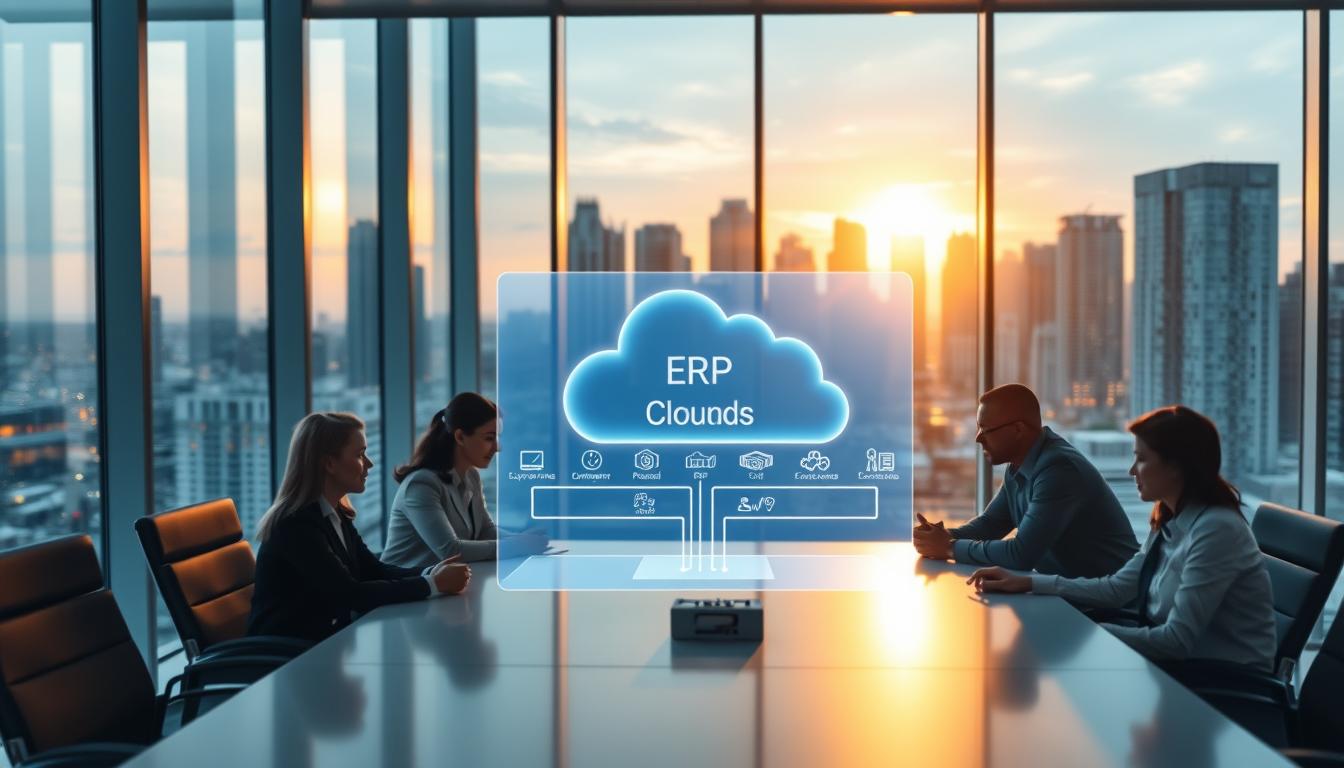In the rapidly evolving digital landscape, businesses across India are recognising the critical importance of enterprise system modernisation. ERP legacy migration represents a transformative approach for organisations seeking to enhance operational efficiency and technological capabilities.
Digital transformation has become an essential strategy for companies looking to remain competitive. Cloud ERP solutions offer unprecedented opportunities to streamline business processes, reduce infrastructure costs, and improve scalability across complex organisational ecosystems.
Transitioning from outdated legacy systems requires strategic planning, technical expertise, and a comprehensive understanding of organisational requirements. The migration journey involves careful assessment, data mapping, and implementation of robust cloud-based enterprise resource planning platforms.
Key Takeaways
- Enterprise system modernisation drives competitive advantage
- Cloud ERP migration enhances operational flexibility
- Strategic planning is crucial for successful digital transformation
- Data integrity and security remain paramount during migration
- Cloud solutions offer scalable technological infrastructure
Understanding Legacy System Migration and Digital Transformation
Digital transformation has become a critical strategic imperative for businesses seeking to remain competitive in today’s rapidly evolving technological landscape. Legacy systems often represent significant barriers to organisational agility and innovation, creating challenges that demand comprehensive cloud migration solutions.

Organisations wrestling with outdated technological infrastructure face substantial operational constraints. Legacy data transfer processes can be complex, time-consuming, and fraught with potential risks. These ageing systems typically struggle to integrate modern business processes, limiting an organisation’s ability to adapt and respond to changing market dynamics.
Exploring System Constraints
Legacy systems frequently exhibit limited scalability and reduced interoperability. Business process integration becomes increasingly difficult as technological frameworks age. Enterprises discover that maintaining these systems requires significant financial investment without delivering proportional value or competitive advantage.
Cloud ERP: A Strategic Solution
Cloud enterprise resource planning (ERP) solutions offer transformative potential for businesses. By leveraging advanced cloud migration solutions, organisations can streamline operations, enhance data management, and create more flexible technological ecosystems. These platforms enable seamless legacy data transfer while providing robust security and improved operational efficiency.
Strategic Value Assessment
Evaluating the return on investment for digital transformation requires careful analysis. Businesses must consider not just immediate technological benefits but long-term strategic advantages. Cloud-based systems provide scalable infrastructure, real-time data insights, and enhanced collaboration capabilities that traditional legacy systems cannot match.
ERP Legacy Migration: Planning and Assessment Phase

Navigating the complex landscape of system replacement planning requires a strategic approach. Businesses embarking on ERP legacy migration must develop a comprehensive implementation strategy that addresses critical organisational needs. The planning and assessment phase serves as the foundational cornerstone for successful digital transformation.
An effective erp implementation strategy begins with a thorough system audit. Organisations need to conduct a detailed evaluation of existing technology infrastructure, identifying potential gaps and performance limitations. This diagnostic process helps create a roadmap that aligns technological capabilities with business objectives.
Stakeholder engagement emerges as a crucial element in system replacement planning. Technical teams must collaborate closely with business units to gather comprehensive requirements. This collaborative approach ensures that the new ERP solution addresses specific operational challenges while maintaining flexibility for future growth.
The assessment phase involves multiple critical steps: – Comprehensive technology infrastructure review – Detailed requirement mapping – Risk identification and mitigation strategies – Resource allocation planning – Performance benchmark establishment
Successful ERP migration demands meticulous planning and a holistic understanding of organisational technology ecosystems. By investing time in robust assessment and strategic preparation, businesses can minimise disruption and maximise the potential of their digital transformation journey.
Technical Architecture and Data Migration Strategy
Enterprise resource planning (ERP) legacy migration requires a sophisticated approach to data transformation. Organisations must develop a robust strategy that addresses the complexities of legacy data transfer while ensuring seamless business process integration.
Successful data migration begins with comprehensive mapping and cleansing protocols. Companies need to audit existing data systems, identifying potential inconsistencies and redundancies that could compromise system performance. This critical step helps organisations create a clean, standardised data environment ready for cloud-based ERP solutions.
Data Mapping and Cleansing Protocols
The data mapping process involves detailed analysis of existing data structures. Technical teams must meticulously match legacy system data fields with new ERP platform requirements. Cleansing protocols eliminate duplicate records, standardise data formats, and validate information accuracy before migration.
Integration Requirements and API Management
Modern ERP systems rely on robust API management to facilitate smooth business process integration. Companies must evaluate existing application interfaces and develop comprehensive integration strategies that support seamless data flow between different organisational systems.
Security and Compliance Considerations
Data migration presents significant security challenges. Organisations must implement rigorous encryption protocols, access controls, and compliance frameworks to protect sensitive information during the transformation process. Careful planning minimises risks associated with data breaches and regulatory violations.
Implementation Timeline and Resource Allocation
Crafting an effective erp implementation strategy requires meticulous planning and strategic resource allocation. Organisations embarking on cloud migration solutions must develop a comprehensive timeline that addresses critical project milestones and potential challenges.
The implementation process typically spans 6-12 months, depending on the complexity of existing systems and organisational requirements. Key phases include initial assessment, system design, data migration, testing, and final deployment. Successful cloud migration solutions demand careful sequencing of these stages to minimise operational disruptions.
Resource allocation plays a crucial role in the erp implementation strategy. Businesses need to invest in skilled personnel, including project managers, technical experts, and change management professionals. Training programmes are essential to ensure staff are prepared for the technological transition and can effectively utilise new cloud-based systems.
Budget considerations are paramount. Organisations should allocate approximately 15-20% of the total project budget for unexpected challenges and potential system customisations. This financial buffer helps maintain project momentum and prevents unexpected roadblocks during the migration process.
Collaborative planning between IT departments, business stakeholders, and cloud migration solution providers ensures a smooth implementation. Regular communication and flexible scheduling can help organisations navigate the complexities of digital transformation effectively.
Conclusion
Migrating legacy systems to cloud ERP represents a critical pathway for organisations seeking digital transformation. The journey requires strategic planning, technical expertise, and a comprehensive understanding of enterprise system modernisation challenges. Businesses must approach this transition with a holistic view, recognising that successful migration goes beyond technological upgrades.
Key technical steps involve rigorous assessment, data mapping, and seamless integration strategies. Organisations should anticipate potential pitfalls such as data inconsistencies, compatibility issues, and potential operational disruptions. By implementing robust migration protocols and maintaining flexibility throughout the process, companies can mitigate risks and maximise the transformative potential of cloud ERP solutions.
The digital transformation landscape demands proactive approaches to enterprise system modernisation. Companies that invest in strategic migration frameworks will gain significant competitive advantages, including enhanced operational efficiency, scalability, and improved data management capabilities. Understanding these dynamics enables organisations to make informed decisions and navigate technological transitions effectively.
Ultimately, successful ERP legacy migration is not just about replacing old systems but reimagining technological infrastructure to support future business growth. Enterprises must view this process as an opportunity for innovation, continuous improvement, and strategic technological advancement in an increasingly digital business environment.

